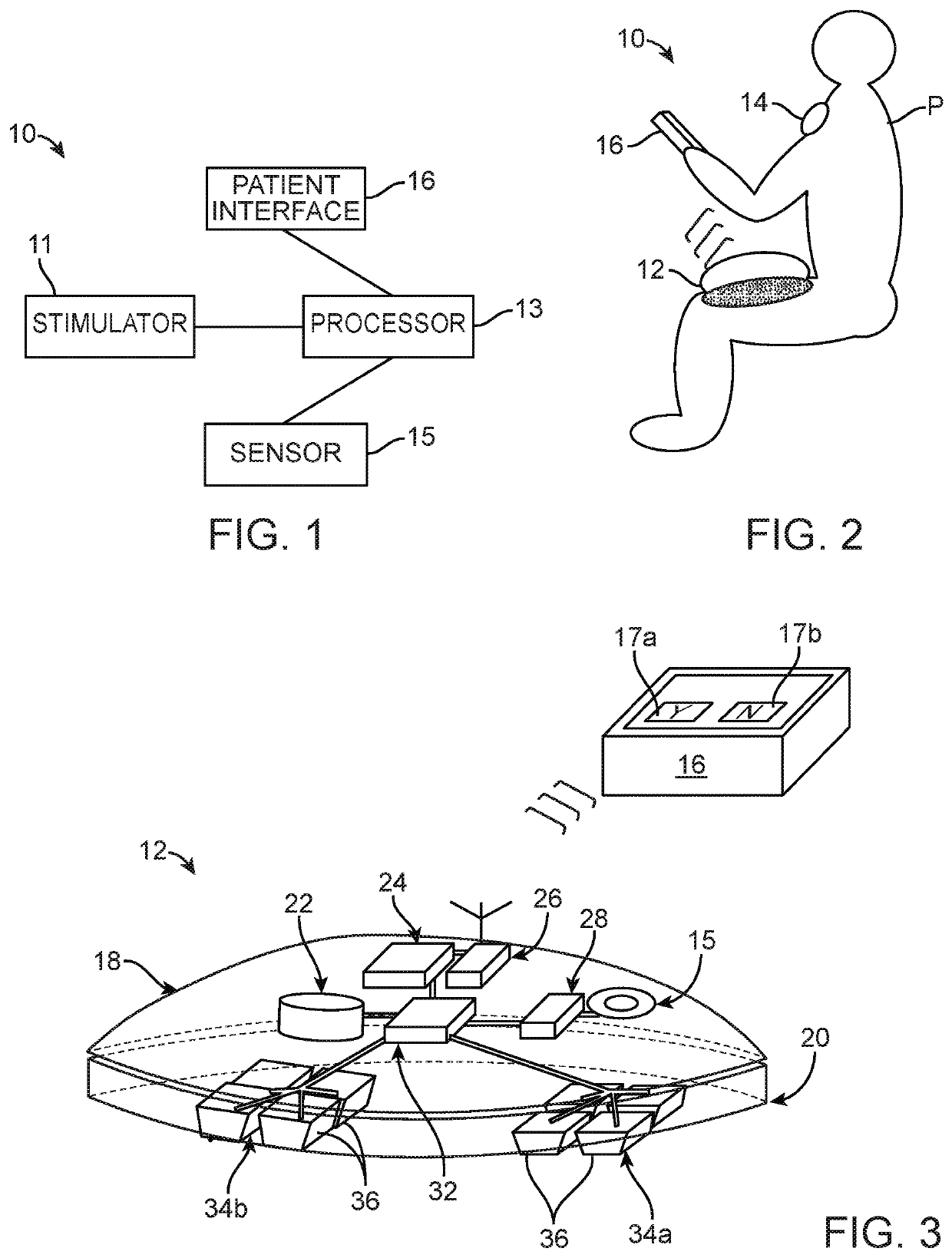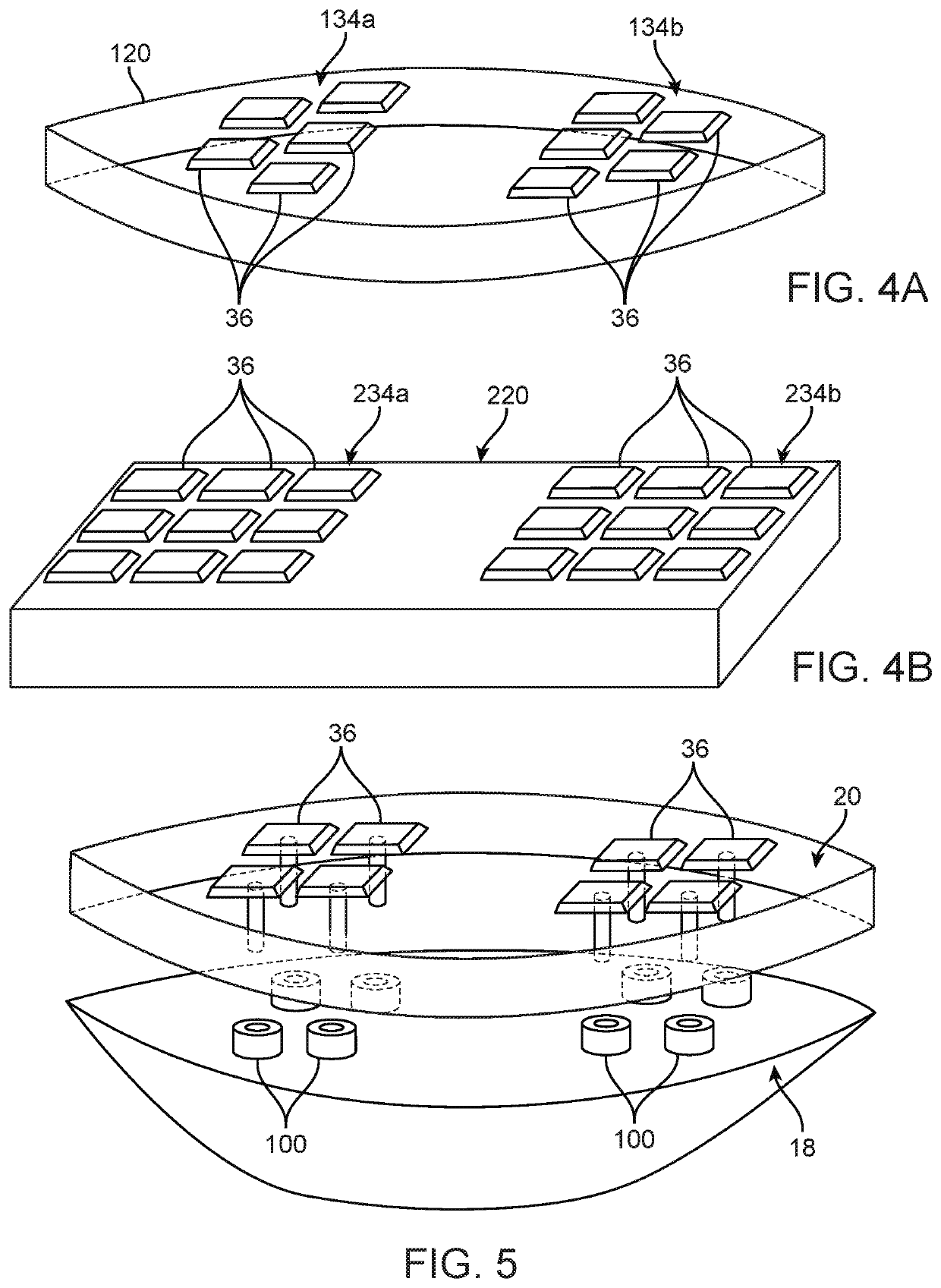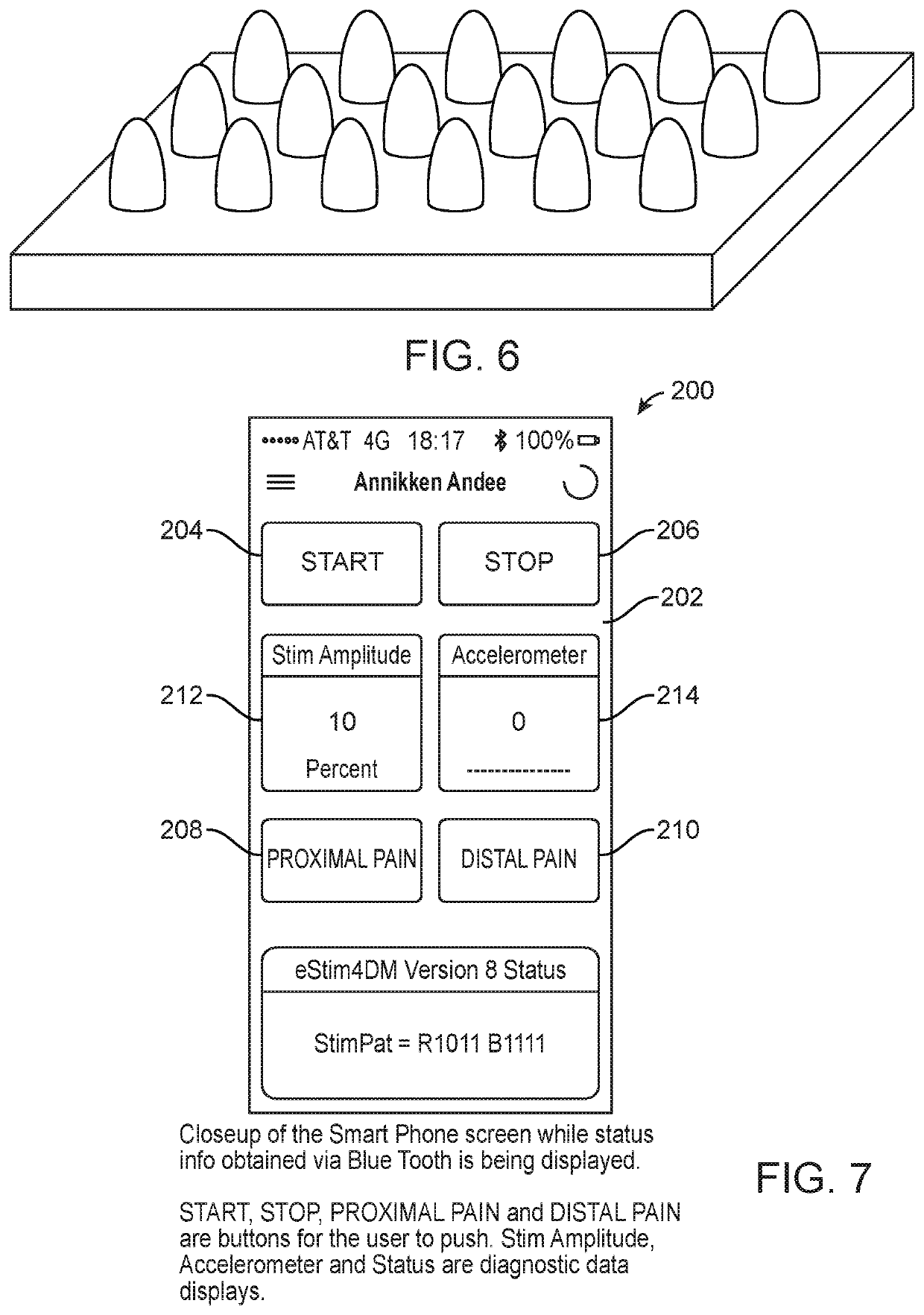Devices, systems and methods for therapeutic muscle stimulation
a technology of muscle stimulation and devices, applied in the field of devices, systems and methods for muscle stimulation, can solve the problems of limiting the utility of the described system, unable to exercise adequately, or even close to modern society, and achieve the effect of stimulating muscle contraction
- Summary
- Abstract
- Description
- Claims
- Application Information
AI Technical Summary
Benefits of technology
Problems solved by technology
Method used
Image
Examples
example 1
ntraction Stimulation for Treatment of Heart Failure
[0195]Referring now to FIGS. 21 to 24, an exemplary configuration of muscle contraction stimulation system 400 and method suitable for treating heart failure are described. Heart failure is a condition in which the cardiac muscle is unable to pump a sufficient amount of blood to meet the physiological needs of the body. It is a progressive disease with no known cure, affecting more than 5 million individuals in the United States. The average expected survival time for heart failure patients is approximately five years from the time of diagnosis. Traditional treatments aim to improve heart function by reducing afterload (e.g. reducing the arterial pressures) and increasing contractility of the cardiac muscle. In spite of such treatments, heart failure patients eventually succumb to this disease.
[0196]Muscle contraction stimulation system 400 may be configured and used for treatment of heart failure patients by stimulating contractio...
example 2
[0205]Insulin resistance refers to an impairment in insulin action in tissues, such as skeletal muscle, adipocytes and liver. In insulin resistant states, insulin stimulated glucose uptake into skeletal muscle is both reduced and delayed. Insulin resistance in skeletal muscle is associated with many disease states, including heart failure, dyslipidemia, chronic kidney failure, normal aging, obesity and Type 2 diabetes. Diabetes is a complex disease that affects millions of people worldwide. It is predicted that 1 in 3 adults in the US will have diabetes by 2050. Obesity plays a role in the majority of cases. As a person becomes more obese, they enter a more insulin resistant state, leading to impaired glucose tolerance, which can lead to the onset of Type 2 diabetes. As the disease progresses, the risk of complications increases. Complications include retinopathy, nephropathy, neuropathy, and vasculopathy, leading to heart disease and stroke.
[0206]Exercise is cons...
example 3
ntraction Stimulation for Treatment of Arthritis
[0214]Osteoarthritis (OA) of the knee is a progressive, age-related condition that may lead to pain, disability, and ultimately knee replacement surgery. It is a leading cause of chronic disability in people over the age of 50, leading to a cycle of increasing pain, weakness, and further pain. Knee OA bears more responsibility than any other disease for disability in walking, stair climbing, and housekeeping.
[0215]In addition to impacting skeletal structures, OA impacts the neuromuscular system. Patients often suffer from weakness of the quadriceps muscle, a knee extensor. Muscle weakness may be associated with a decrease in muscle mass and / or a reduction in neural drive to the quadriceps muscle. Quadriceps weakening has been related to decreases in proprioception, joint stability, and shock absorption, leading to further joint degeneration and subsequent pain.
[0216]Treatment of knee osteoarthritis aims to relieve pain and improve metr...
PUM
 Login to View More
Login to View More Abstract
Description
Claims
Application Information
 Login to View More
Login to View More - R&D
- Intellectual Property
- Life Sciences
- Materials
- Tech Scout
- Unparalleled Data Quality
- Higher Quality Content
- 60% Fewer Hallucinations
Browse by: Latest US Patents, China's latest patents, Technical Efficacy Thesaurus, Application Domain, Technology Topic, Popular Technical Reports.
© 2025 PatSnap. All rights reserved.Legal|Privacy policy|Modern Slavery Act Transparency Statement|Sitemap|About US| Contact US: help@patsnap.com



